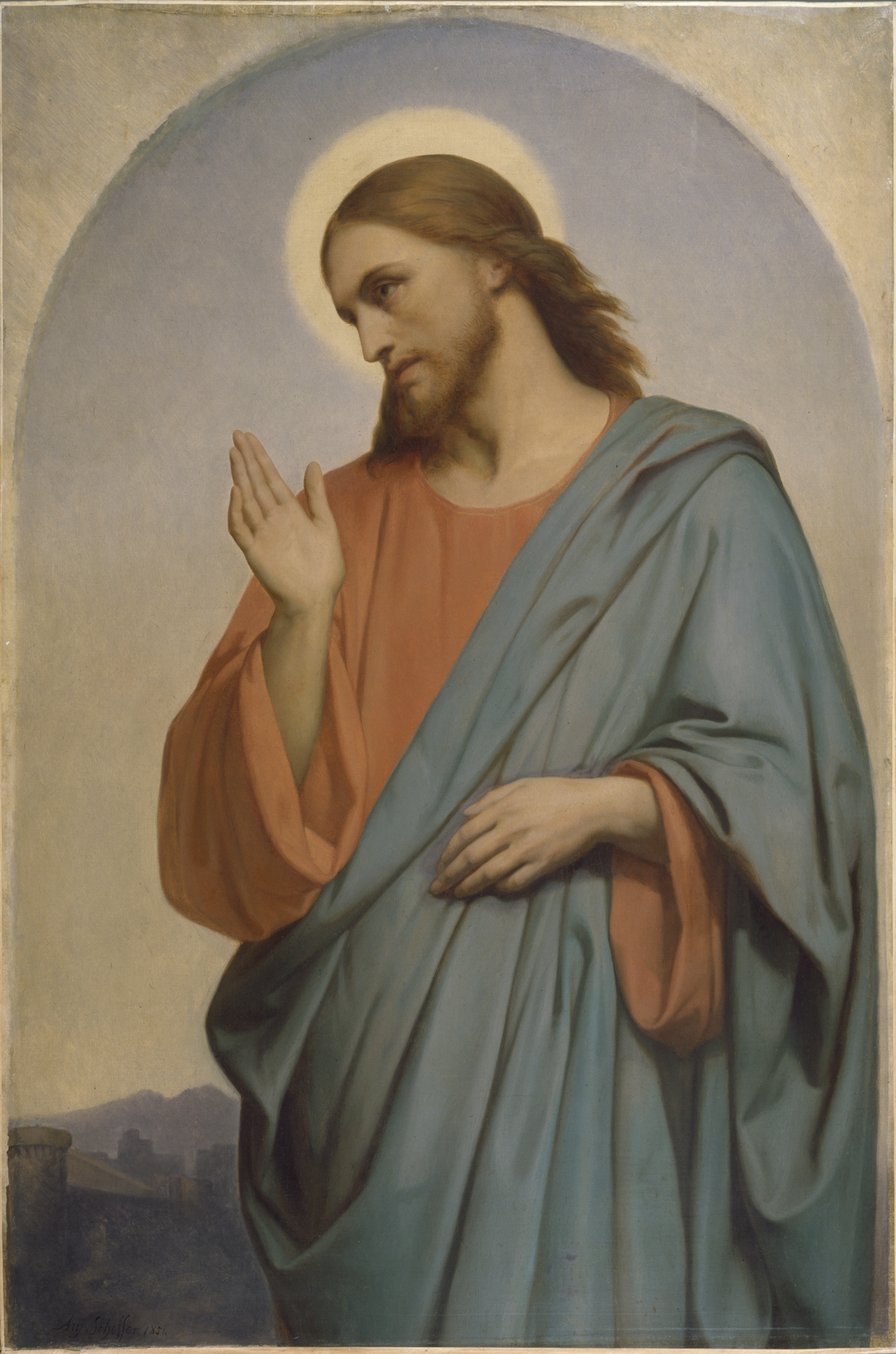Christ Weeping Over Jerusalem
(18th and 19th Centuries )
Before enrolling in the École des Beaux-Arts, Scheffer studied with the neoclassically trained artist Pierre-Joseph Proudhon, whose mastery of the art of the past and high technical finish he emulated. He exhibited his first works at the age of 17 in the 1812 Salon in the so-called "juste-milieu" (in English, literally, middle path) tradition. Scheffer was attracted to romantic themes gleaned from contemporary authors such as Sir Walter Scott and Goethe. His meteoric rise in the art world drew instant critical acclaim and the acquaintance of such artists as Théodore Géricault, Eugène Delacroix, and Paul Delaroche.
This work was not seen until after Scheffer's death. He stopped exhibiting at the Salon altogether in 1846 and became increasingly preoccupied with religious imagery with a seriousness that reflects a pointed departure from his earlier, more anecdotal work. In this iconic image, he focuses on the solitary figure of Christ, who is weeping for the coming destruction of Jerusalem, as described by the Evangelist Luke in the New Testament (19:41): "As he came near and saw the city, he wept over it."
Inscription
Provenance
Provenance (from the French provenir, 'to come from/forth') is the chronology of the ownership, custody, or location of a historical object. Learn more about provenance at the Walters.
Avery, 1882 [from Henry Walters handwritten notebook, 1887, no. 65]; William T. / Henry Walters Collection, Baltimore, 1882, by purchase; Walters Art Museum, 1931, by bequest.
Exhibitions
| 2014-2016 | From Rye to Raphael: The Walters Story. The Walters Art Museum, Baltimore. |
| 1980 | Christian Imagery in French Nineteenth Century Art, 1789-1906. The Shepherd Gallery, New York. |
Conservation
| Date | Description | Narrative |
|---|---|---|
| 2/16/1938 | Examination | examined for condition |
| 9/1/2008 | Treatment | surface cleaned; stabilized |
Geographies
France (Place of Origin)
Measurements
H: 42 3/8 x W: 28 15/16 in. (107.6 x 73.5 cm); Framed H: 60 11/16 × W: 46 11/16 × D: 4 1/16 in. (154.2 × 118.6 × 10.3 cm)
Credit Line
Acquired by William T. or Henry Walters, 1882
Location in Museum
Not on view
Accession Number
In libraries, galleries, museums, and archives, an accession number is a unique identifier assigned to each object in the collection.
In libraries, galleries, museums, and archives, an accession number is a unique identifier assigned to each object in the collection.
37.111


